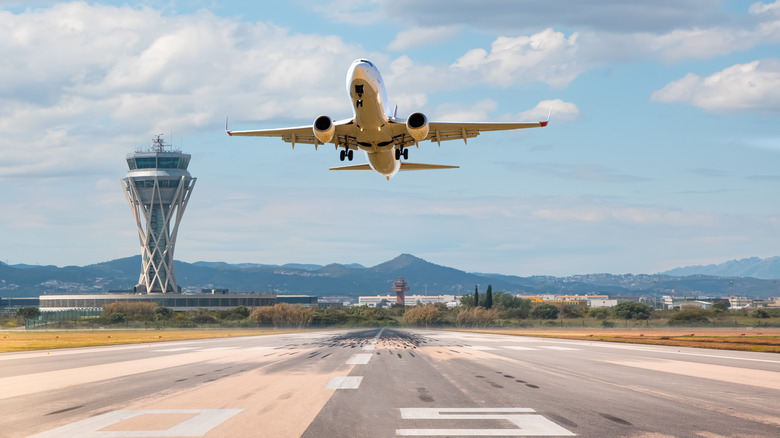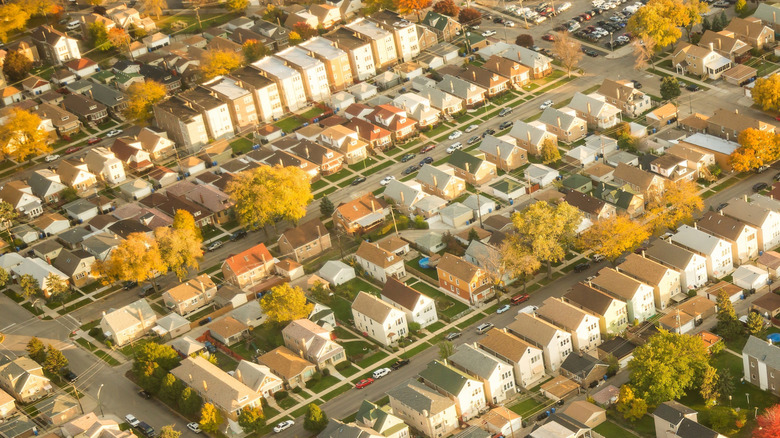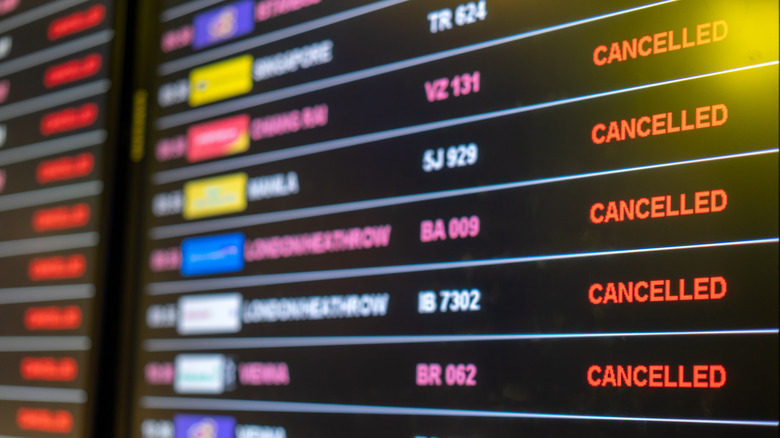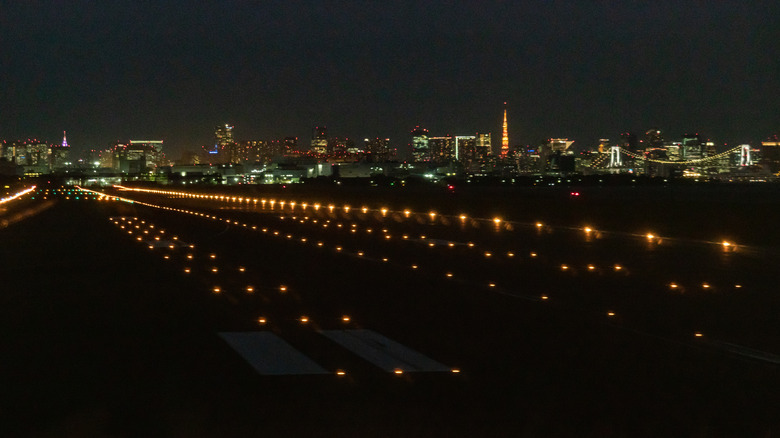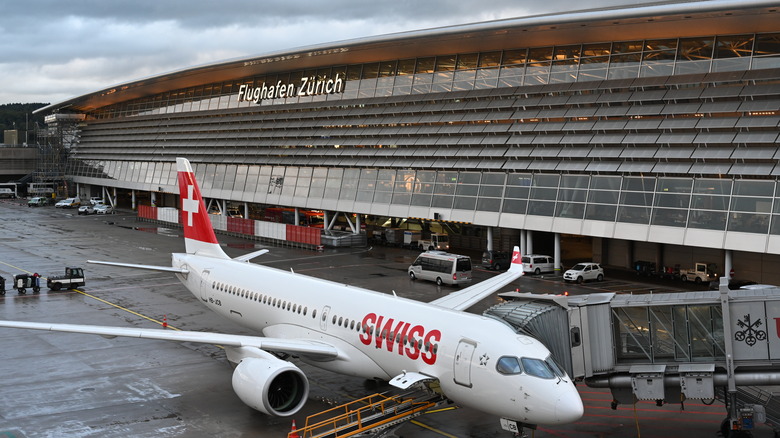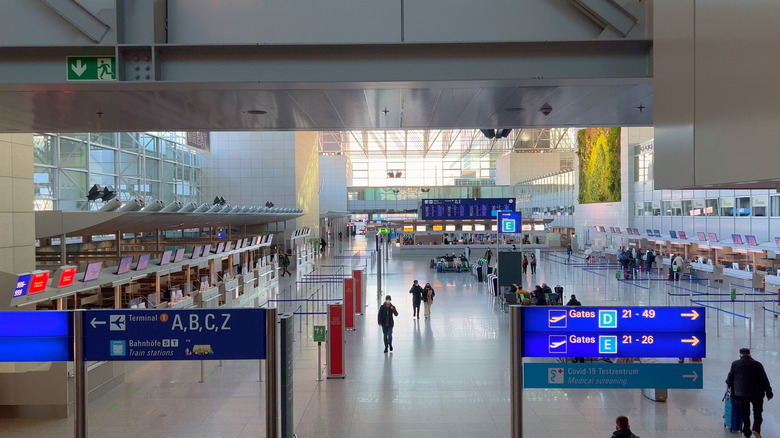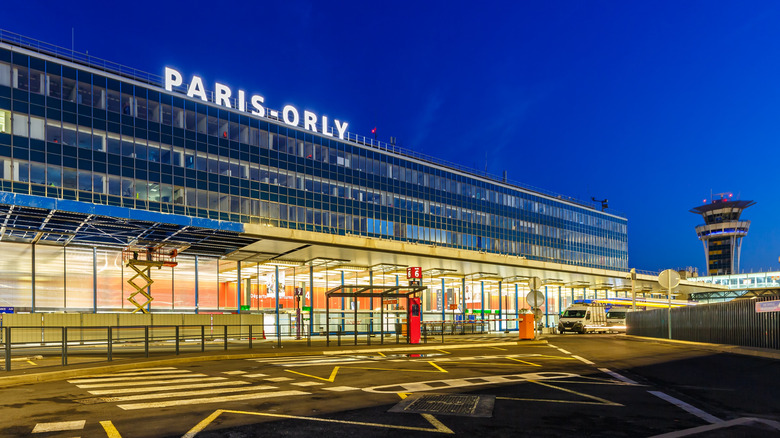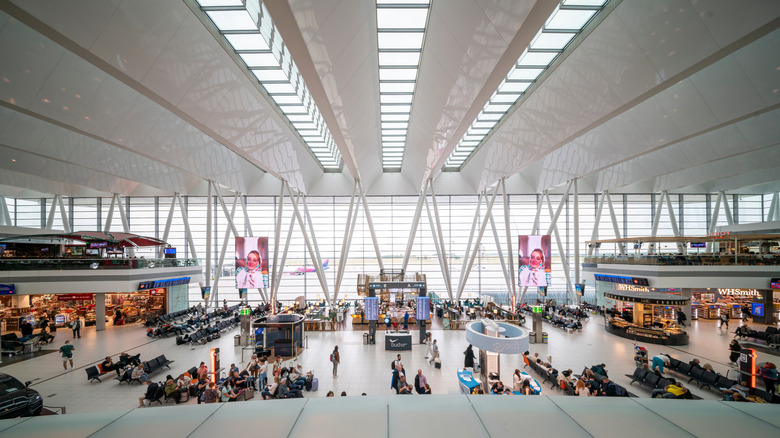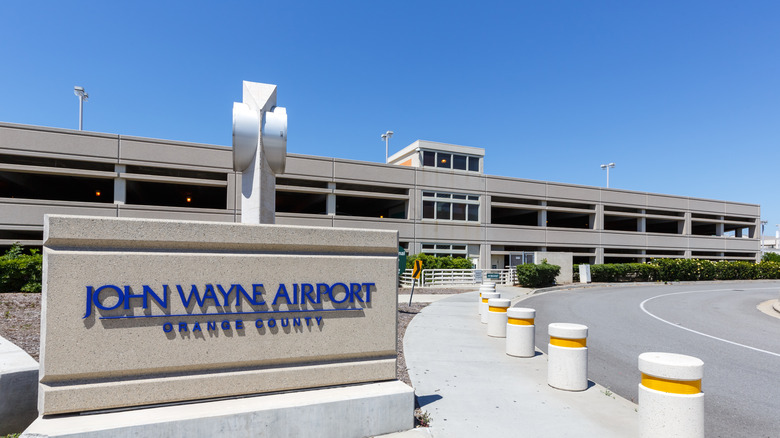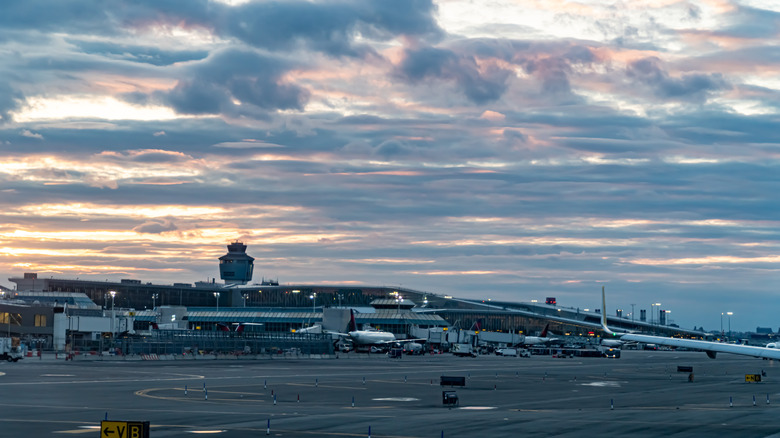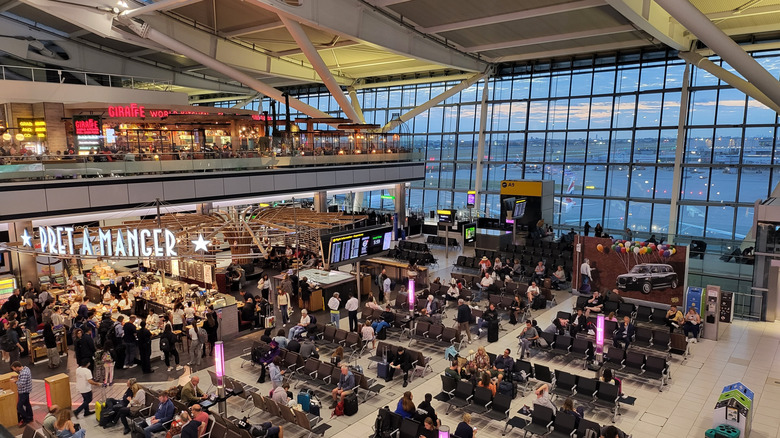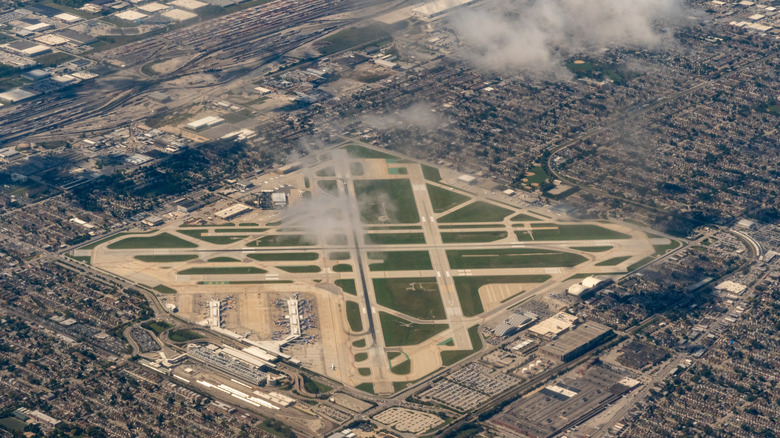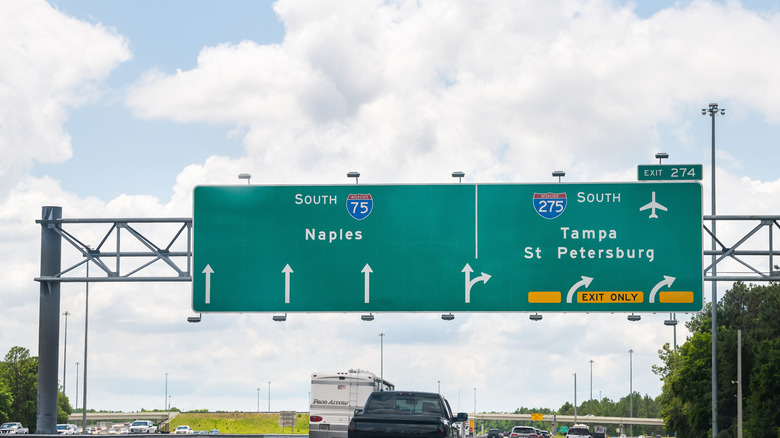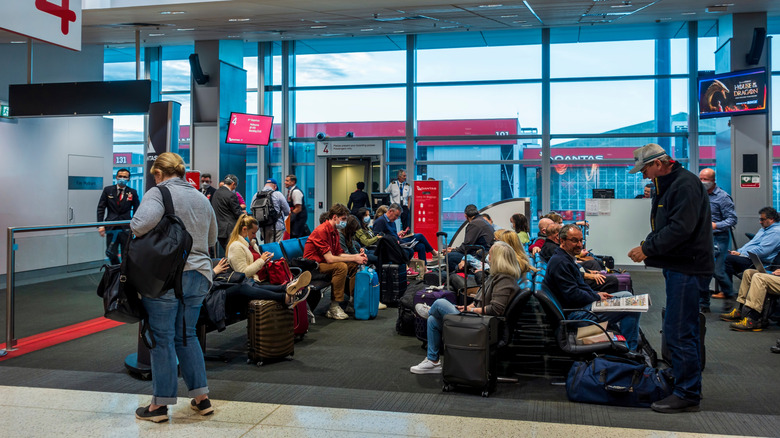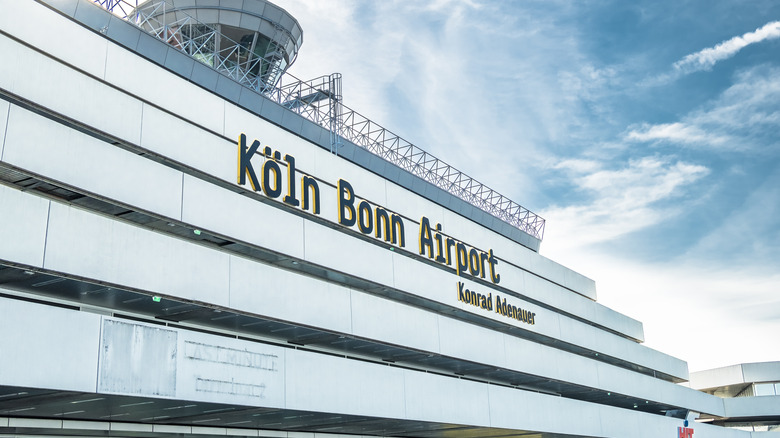10 Airports You Might Not Realize Have Curfews (And What That Means For You)
As cities expand, airports that once might have been on the edges of town — or at least in lightly populated areas — find themselves smack in the middle of residential neighborhoods. Think of places like LaGuardia, Chicago Midway, Mexico City's Benito Juarez, or Paris-Orly. Due to noise complaints from residents, cities have had to balance the need to keep air traffic, especially essential cargo and mail flights, with ever-increasing noise complaints about lack of sleep from locals who live near the airports.
The solution has been to restrict flights at certain hours, usually between 10 p.m. and 6 a.m., give or take. While the hours for curfews are generally the same, their implementation and limits can vary incredibly, ranging from total bans on arrivals (except emergency landings) at places like Frankfurt, to more flexible arrangements that cap night flights to an acceptable number, according to criteria such as need (e.g. delays) and aircraft noise level. Here are the things you need to know about curfews and which airports have them.
Why do curfews exist?
While the stated reason for curfews is noise abatement, the reality behind it is much more complicated and involves health and as usual, money. Airports are loud. Just look out onto the tarmac and you will see airport employees working near planes are often wearing ear protection. If you go to airport and get a tarmac boarding or deplaning, you can experience the noise for yourself. Now imagine having to listen to that every night, even with soundproofing paid for by the local government. Sleep deprivation resulting from listening to these noises daily will a toll on anyone's mental and physical health.
The people who live near airports in places like Chicago-Midway or Orange County also own property, and, in some cases, property that is quite valuable. Without noise abatement curfews, property values surrounding airports would plummet, which would cost the city in tax revenue and lead to deterioration of neighborhoods surrounding airports — creating a strip of extremely undesirable real estate that brings crime and all sorts of other problems. Given how expensive cities have become, residential areas near airports often provide cheaper but still safe alternatives for middle and working class families who cannot afford living in downtown areas.
How can curfews disrupt your plans?
The answer is the disruptions can range from relatively minor (in fact, virtually unnoticeable) to a canceled flight. Generally, if you are flying to an airport with a curfew and your flight is scheduled to arrive at its destination near the end of curfew hours, the airline will simply load up the plane and delay the flight by 15 to 30 minutes. For example, if a transatlantic flight is scheduled to land in Zurich at 5:45 a.m. but operational hours don't begin until 6 a.m., the flight might wait that half hour to take off to ensure city authorities don't deny it permission to land.
But if a flight is delayed in such a way that it ends up being scheduled to take off or land in the middle of a curfew, the airline will likely cancel the flight and rebook everyone on a different flight the next day. For example, if a flight meant to leave at 9 p.m. is delayed until 11 p.m. at an airport with a curfew, those passengers are out of luck and must wait until the next day.
Airlines do this principally to avoid noise fines and the need to divert flights to out-of-the way airports, which then requires them to shuttle passengers to their original destination on the airline's dime. For those flights that cut it very close, a curfew can result in some minor disruptions. For instance, a flight that misses LaGuardia's midnight cutoff can find itself diverted to John F. Kennedy International Airport (JFK). This means that travelers are in for a longer train trip or a more expensive taxi ride to their destination — particularly if they are headed to Manhattan or the Bronx.
How to avoid curfews
The reality is most people will probably never deal with an airport curfew (or if they do, they know about it) unless flying out of a very small group of airports during certain hours. Especially for those flying to or from places like Orange County or LaGuardia, where curfews can be rather strict when enforced, the easiest way to avoid them is to book flights in the middle of the day. This means avoid early morning and late night flights where a delay can mean a curfew-induced cancellation.
For instance, if you are considering leaving Orange County's John Wayne International Airport at 9 p.m. and must leave on that particular day, pick a different flight, if possible: Even a one-hour delay will leave you waiting for your flight until 7 a.m. the next day because the airport has a policy against departures during curfew hours (with few exceptions beyond emergencies). If you absolutely must fly into LaGuardia, make sure that flight doesn't have a chance of landing after midnight or you will end up at JFK instead.
In Europe, however, travelers are more likely to encounter curfew-related issues, especially on flights between European countries. In these cases, diversion to a smaller or more distant airport (e.g. Berlin to Leipzig or Zurich to St. Gallen) is in the cards. Although some airlines may provide transportation and lodging, this still can cause major inconveniences and loss of valuable vacation time. Apart from this, the rules for avoiding curfews are the same as in America: Don't push the envelope on time and do your research before booking.
Zurich Airport (ZRH)
If you are traveling to Europe, especially with Swiss International Airlines, there is a good chance you might end up flying through this major hub, which has one of the strictest nighttime flight curfews in the world. Aircraft are generally not permitted to take off or land between 11:30 p.m. and 6 a.m. There are occasionally exceptions made for flights that are severely delayed and whose further delay would result in increased airport congestion and disruption of flight schedules, while emergency landings are usually permitted.
Outside of those two criteria, however, most flights approaching Zurich post-curfew will be redirected to other airports that can be quite out of the way. In cases where a flight is given permission to leave during curfew hours, the airline must pay a surcharge. that as you have probably guessed, is passed on to you, the customer. As with most curfews, the goal is to reduce noise pollution for residents who live near the airport and avoid having to pay out compensation for noise complaints.
Frankfurt Airport (FRA)
Frankfurt Airport, a major German hub is another possible stopping point for those flying Lufthansa, particularly when flying into Eastern Europe or the Balkans from the United States. The curfew is almost as strict as Zurich, albeit a bit shorter: absolutely no take-offs, landings, or engine testing between the hours of 11 p.m. and 5 a.m. The only exceptions, as with its Swiss counterpart, are for emergency landings and severely delayed flights whose further delay would worsen congestion and disrupt flight schedules.
While Frankfurt's rules are mostly straightforward, there is a small catch travelers should be aware of. The airport restricts the number of flights taking off and landing between 10 and 11 p.m. and 5 and 6 a.m., which means that if your flight is delayed up to one our before the curfew kicks in (e.g. a 9 p.m. flight is delayed till 10:15 p.m.), you could end up having to reschedule your flight if there are not enough slots to get your flight out. On top of that, certain aircraft that make too much noise are not allowed to fly on weekends, which no doubt affects which destinations are available to travelers looking to plan their trips on specific dates.
Paris-Orly Airport (ORY)
Located on Paris' south side, the smaller of the two capital airports has a fairly strict curfew from 11:30 p.m. to 6 a.m. on most flights. This is because Paris-Orly is located much closer to the densely inhabited central parts of Paris than it's counterpart, Charles de Gaulle Airport (CDG). The curfew is purely in place for noise abatement. Charles de Gaulle, Paris' other airport, is not subject to the same limits due to being farther outside the city and an important destination for cargo flights. However, there are some restrictions, even though night flights are still very common there.
Ferenc Liszt International Airport (BUD)
Budapest is a major tourist destination, one of Samantha Brown's top underrated European cities for winter. However, know that Hungary's main hub has a curfew in place from 10 p.m. to 6 a.m., fairly similar to its other European counterparts, to allow residents who live near the airport a chance at a decent night's sleep. However, it is a little more complicated because the near-total ban only applies from midnight to 5 a.m. So even if you are flying to Budapest during curfew times, there is still a chance your flight can get into the airport if everything lines up favorably.
During the eight hours of curfew, the airport allows up to 50 daily take-offs and landings. Of those, six are reserved for the peak curfew hours of midnight to 5 a.m., so this curfew is not as strict as other airports, but could still cause travelers headaches if there are a lot of delayed flights that are pushed back into curfew hours. Otherwise, the airport requires pilots to adhere to some restrictions on the uses of certain equipment during night flights as a means of noise abatement rather than simply shutting down traffic altogether. As with all others, the airport permits emergency landings at all times.
John Wayne International Airport (SNA)
John Wayne International has had one of the strictest curfews in the United States since 1985, thanks to its extended hours that can affect business travelers in particular. All departures are banned between the hours of 10 p.m. and 7 a.m. — much later than one might expect, especially for travelers who are used to grabbing 6 a.m. flights for business trips. Arrivals are banned between 11:00 p.m. and 7 a.m. On Sundays, the restriction extends to 8 a.m. Generally, if you are a business traveler needing to take an early morning flight, it might be best to take one the day before you need to be there because, unlike places like New York City, those early morning business trips will not be possible from this airport. As always, emergency landings are exempt.
LaGuardia Airport (LGA)
When flying to LaGuardia, the most dreaded thing one can hear from the pilot is, "Folks, we have been diverted and will be landing at JFK." Wondering why? LaGuardia happens to have a little-known curfew, which although not as strict as say, Orange County, the Port Authority occasionally enforces between April and December. While the airport does not have a strict curfew like San Jose, New York City's Port Authority has the right to close the airport at midnight when it deems necessary — usually for runway maintenance or noise abatement.
Travelers whose flights to LaGuardia are delayed and thus diverted to John F. Kennedy International Airport (JFK), can face major inconvenience, particularly if headed to Manhattan. While LaGuardia is a hop and a skip away from Manhattan, JFK is on the city limits in Southeast Queens, and since you're arriving, especially on a domestic flight, chances are you won't be able to at least enjoy JFK's numerous luxury establishments in the International Departures area. You can take the AirTrain to a subway station that will take you to Manhattan, but that adds quite a bit of time to your trip. Similarly, the taxi ride is longer, the route suffers from a lot more traffic, and is more expensive. For this reason, airlines are generally encouraged not to schedule late-night flights into LaGuardia, but no one can predict delays.
London Heathrow Airport (LHR)
Heathrow is one of Europe's biggest hubs for flights from all over the former British Empire and the world. Famous for its extremely long lines and Kafka-esque layout, the airport, despite not having any official curfew, can throw an extra wrench into your plans with its nighttime flight rules.
Due to restrictions on night flights in place since 1962, the airport can be said to have a de facto curfew for noise abatement reasons that travelers should be aware of. The general limits apply between 11 p.m. and 7 a.m., with the hardest restrictions in place from 11:30 p.m. to 6 a.m. During these times, arrivals and departures are restricted to 5,800 per year. The exact rules are a little unclear, but generally, arrivals must land after 5 a.m., something airlines voluntarily comply with, while departures generally must leave before 11 p.m. or wait until 6 a.m. the next day. As usual, emergency landings due to inclement weather, mechanical failures, and medical emergencies, are exempt from all restrictions.
Chicago Midway International Airport (MDW)
The smaller of Chicago's two airports, it is located on the southwest side of the city and surrounded by the West Elsdon and Garfield Ridge neighborhoods. Thus, while the airport doesn't have an actual curfew, it is part of the Fly Quiet Program. Under this agreement, carriers agree to restrict their flights between 10 p.m. and 7 a.m.
Most likely, this won't affect travelers, as Midway is still open 24/7 and flights can land there during quiet hours if they wish. What this might mean, however, is that if you need to travel during the quiet hours (for instance, taking a 2 a.m. Aeromexico flight to Mexico City), you will have to go to Chicago's other airport, Chicago-O'Hare International Airport (ORD), which is in a different part of the city.
Naples International Airport (NAP)
Naples, a ritzy, luxurious seaside Florida city full of retirees, sees many people fly in and out, which has led to massive residential growth in and around the city. The Florida airport has a voluntary curfew from 10 p.m. to 7 a.m., as usual, for the purposes of noise abatement while local residents are sleeping.
This one is interesting because it is not enforced by law the way Orange County's is, but rather through shame. Airlines can technically fly into the airport during the curfew hours, but if they do, their names are added to a public list complete with the names and contact information of violators — both public and private. This includes, crucially, the information of the pilots involved. Local residents are then encouraged to bombard the county and the operator with complaints and basically shame them and their pilots into compliance with the curfew.
For travelers, though, their names won't end up publicized if they break curfew. However, due to the hours, it is best not to book flights too close to that 10 p.m. cutoff or plan trips that require early departure since that 7 a.m. start time can throw a wrench in your plans for people wanting to get on early morning flights.
Sydney Kingsford Smith Airport (SYD)
Whether you're flying to the Land Down Under on business or for an island or coastal getaway, it's worth knowing that virtually all the country's airports have curfews that might affect travelers given the flight length and times of arrival. Australia's main international hub in Sydney has a curfew in place between 11 p.m. and 6 a.m., which is fairly typical as far as airport curfews go. Similar rules apply to Australia's other major airports in Adelaide, Essendon, and Gold Coast. There are a few exceptions for cargo aircraft and corporate aircraft that meet noise standards, but chances are, most travelers will not fall under this exception. As usual, emergencies are allowed, while flights whose further delay would cause increase in congestion cane be given a dispensation to depart during curfew hours.
All this said, Sydney is not unreasonable for travelers whose flights push up up to that 11 p.m. window, be it due to delays or scheduling issues, and might take off slightly after. If a flight is given clearance to taxi and takeoff before 11 p.m., then air traffic control will allow the plane to take off, even if airport traffic means that it must do so after curfew has already gone into effect. So for those whose flight is delayed and are worried about a potential cancellation, there is no reason to fear in the Land Down Under. If you are cleared to depart before curfew, you will be allowed leave.
Konrad Adenauer International Airport (CGN)
The main hub of the North Rhine-Westphalia region is the gateway to some of Germany's best destinations you can't skip, especially if you're visiting Cologne for its stunning cathedral — among other sites and cities. And like most of Germany's airports, it has a nighttime curfew, although it is not as strict as others. The airport has had a nighttime flight ban since 2012, when the North Rhineland-Westphalia government voted to ban flights between midnight and 5 a.m. — shorter than at destinations like Zurich. Interestingly, the airport disputed it, claiming that it cost the area nearly 2,000 jobs and 1 million passengers in traffic. Regardless, noise pollution was getting to severe leading to local residents to demand the curfew.
